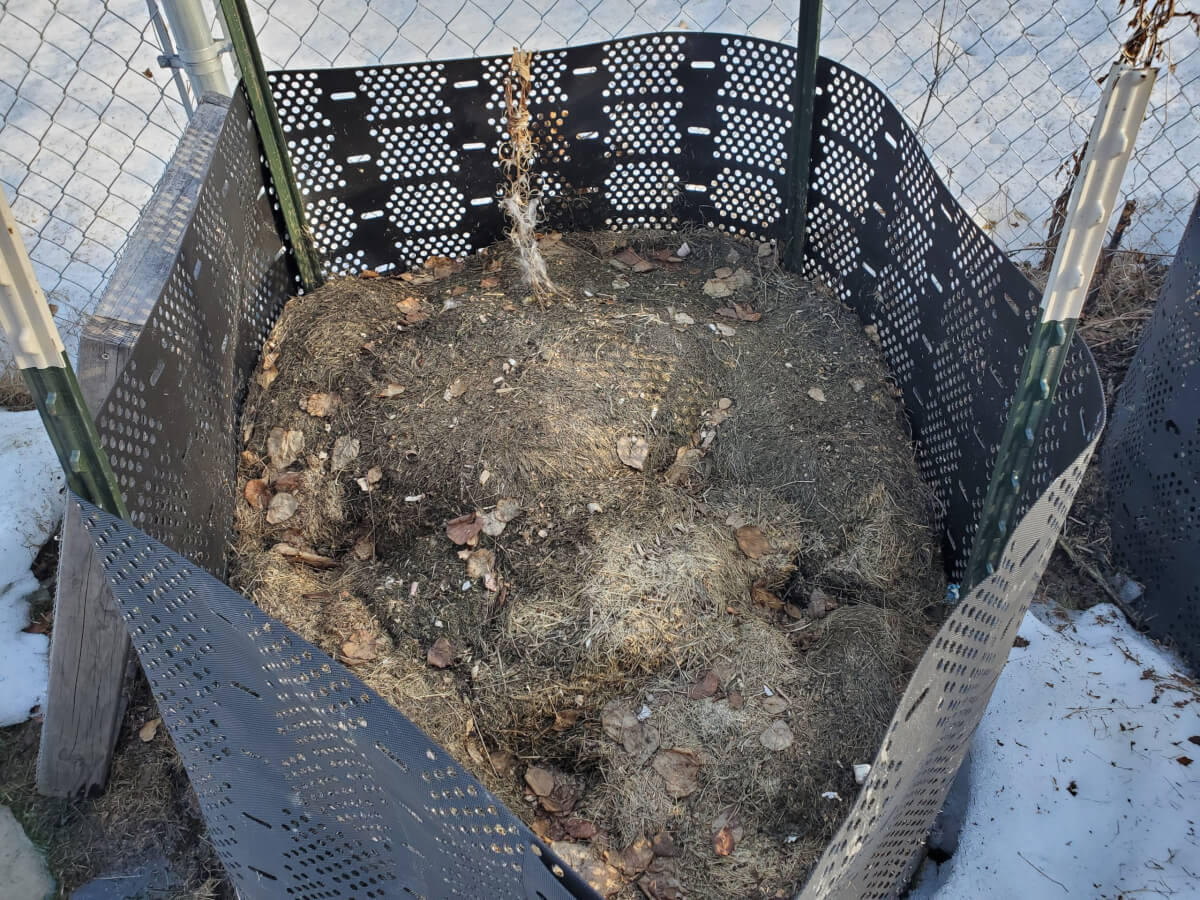I know some of you all are a bit “odd” and really like our off the wall compost pile updates. It’s weird, but we’ve come to accept it as completely normal after all these years. So, here’s a continuation from our fall update!
If you’ve studied our in-depth extreme northern composting guide, you know we practice both hot and cold composting as pretty much a singular concept so we can practice composting “all year long.” We practice hot composting during the summer, when it’s practical, and we can certainly “fast turn” compost just as well as any lower-48’er. But, it’s often underestimated just what we can do with a good, long 9 month cold composting over our overtly-long, unforgiving winter!
This recent pic of our winter cold composting efforts pretty much shows the fantastic result we’re able to get with that cold composting process. This bin was literally overflowing (by about a foot) when we put it to bed prior to last winter. It had the “proper” 80% carbon, 20% nitrogen, well mixed, that is called for with hot composting. The only difference? It spent most of it’s time well below zero over the winter. You can see, it has lost an estimated 30-40% of its volume and is pretty much ripe for a turn and probably even a sift for finalized compost.
If you’re a composter, it’s important to understand that our brutal northern winters do not stop the composting process. It continues to happen, just on a much slower scale. When you go into winter with a properly built compost pile, you’ll see the same results you would with a hot compost, just that it’ll take the entire winter to get to the same place you could in 2-3 months with hot composting. When you have a “proper” pile, your spring harvest can be pretty much ready to go by the time your piles thaw in the spring. Our piles are still at least two weeks away from thawing completely, but this is exactly what we want to see for our earliest composting efforts of the year.
To get the production of compost we desire, we’ve simply had to scale things up. Instead of waiting for two or three month cycles, like a southern composter might, we have to think of things on more of an annual scale. We leverage scale to achieve production goals over an annual cycle instead of constantly chasing short term goals. In our terms, this means managing almost 1,000 gallons of compost capacity at any given time. But, that’s for “our scale.” Yours might, and should be, different.
In case you’re interested in reading more, we talk about general composting and this hot-cold composting phasing that we implement in an article in the comments. It’s due for a re-write, especially now that we’ve figured out the terms of “scale” and “effectiveness” of our cold composting cycles. We’ll get there eventually, hopefully next season, but this post hopefully fills in some of those details!


